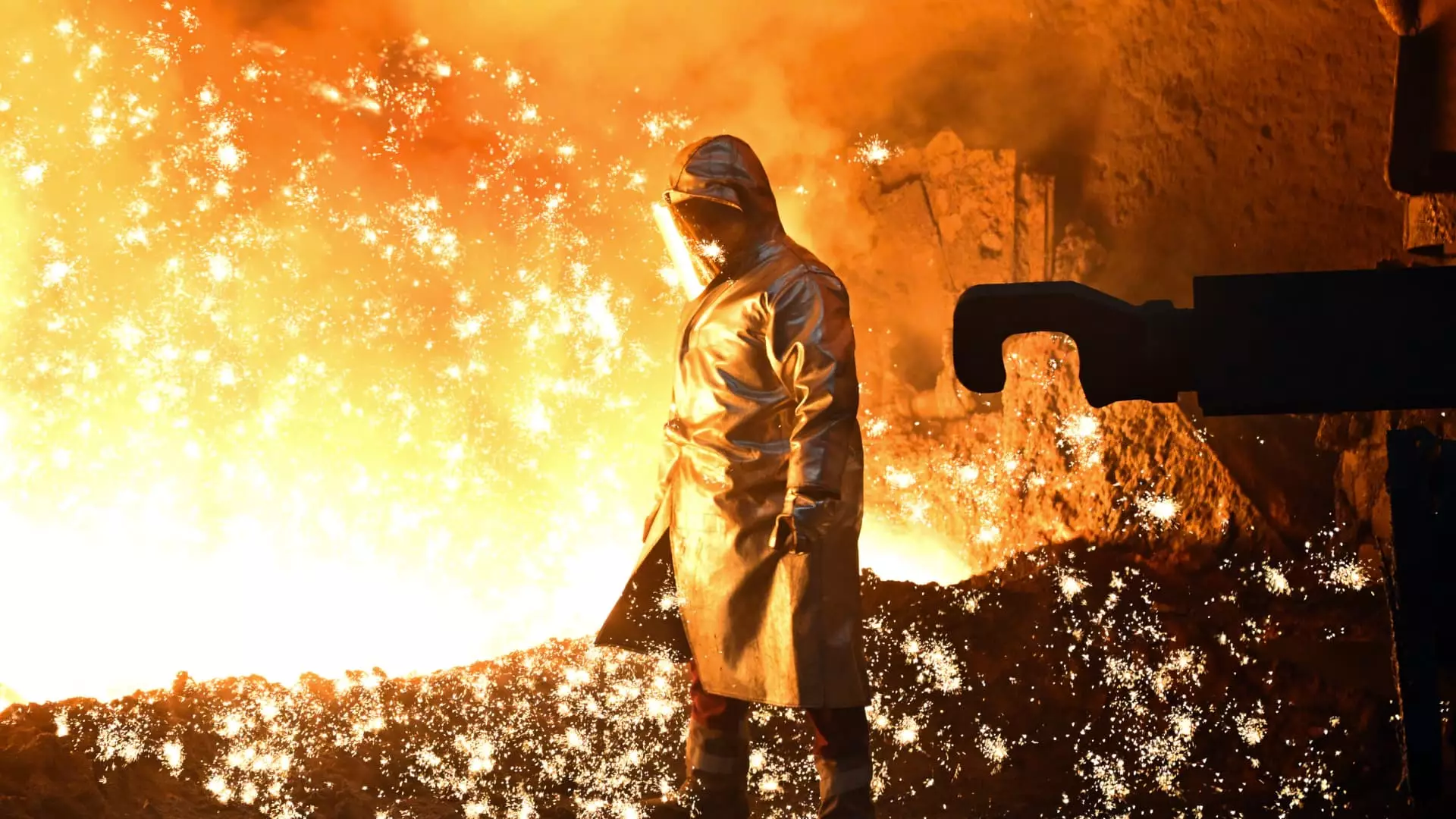In an unexpected turn of economic governance, President Donald Trump announced plans to impose a new set of 25% tariffs on steel and aluminum imports. Set to be articulated on a Monday press briefing, this move adds to the already stringent tariffs that have characterized his administration’s trade policy. Though no specific timeline for their implementation was provided, the ramifications of such levies could reverberate across various sectors in both the domestic and international markets. Steel and aluminum are cornerstone materials for industries such as transportation, construction, and packaging, making this decision significant.
In the realm of potential beneficiaries, the U.S. steel industry is likely to come out on top. Recent data reveal a staggering 35% decline in U.S. steel imports between 2014 and 2024, attributed largely to tariffs established during Trump’s initial term. Analysts predict an upsurge in domestic demand as a result of these new tariffs, albeit with some initial setbacks. James Campbell, a noted analyst from CRU, highlights the short-term risks that could suppress demand but maintains optimism about future investment influx into the steel and aluminum sectors. Indeed, following the earlier tariffs in 2018, there has been a noticeable rise in investments dedicated to bolstering domestic production capacity.
While immediate demand might experience a downturn, the anticipated long-term effectiveness of the tariffs could cultivate an environment ripe for investments. Historically, tariffs imposed on steel and aluminum during Trump’s presidency have spurred domestic industries to ramp up production capabilities. The Congressional Research Service observed that within five months of the initial tariffs, the administration netted over $1.4 billion in revenue. This financial gain could further incentivize both the government and private companies to invest in domestic manufacturing, thereby solidifying the U.S. industry’s footing in the global market.
Conversely, the ramifications of the proposed tariffs will not be uniformly positive. Countries like Canada, Mexico, and Germany, which are leading exporters of steel and aluminum to the U.S., stand to be adversely affected. Germany’s Thyssenkrupp, one of the continent’s major steel producers, publicly expressed an expectation of “very limited impact” on their operations in the U.S., attributing this resilience to the company’s substantial domestic manufacturing framework. However, this optimism may not be universally shared among other exporters, particularly smaller nations that lack the manufacturing depth to weather such tariffs.
Asian markets are also bracing for the impending changes. Countries like South Korea, Vietnam, and Japan are likely to experience immediate negative consequences as new tariffs may strip them of their competitive edge in exporting metal to the U.S. Vietnam’s exports to the U.S. have surged by over 140% year-on-year, a trend that may come crashing down under these tariff policies. The implications extend not just to exporters but could also affect U.S. companies reliant on imported metals, potentially increasing costs and disrupting supply chains.
As President Trump prepares to unveil his new tariffs, the economic landscape is poised for significant shifts. While domestic steel companies may celebrate an influx of business, many international trade partners are likely to feel the sting. The dual nature of tariffs presents a complex challenge, balancing short-term economic protectionism with long-term global competitiveness. For stakeholders on both sides of the equation, it will be crucial to navigate the ensuing repercussions intelligently and strategically. Ultimately, whether these tariffs will bolster American industry or simply isolate it from a connected global market remains to be seen, with implications that could resonate far beyond the borders of the United States.


Leave a Reply